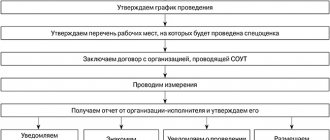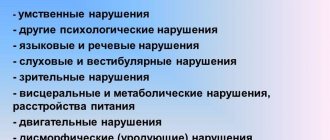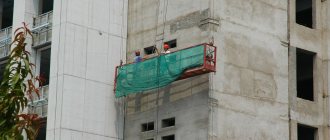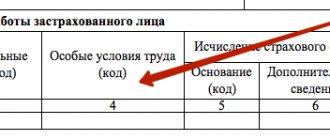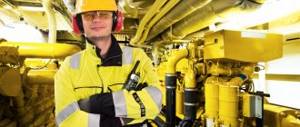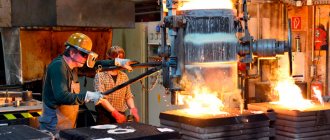Optimal
According to this classification, the most favorable working conditions are optimal (class 1), that is, under which there are prerequisites for maximum labor productivity with minimal impact of production factors on the human body.
When working in such an environment, the health of workers does not suffer from the negative influence of the labor process; the influencing factors are within safe limits provided for the population (do not exceed background values).
A video about workplace certification and the consequences of failure to do so.
Acceptable
Acceptable labor parameters include those production factors in which the negative impact does not exceed the background values regulated for workplaces. The health of a working person after potential exposure to the body is restored by observing the rest time or by the beginning of the next shift.
The exposure does not have a negative impact on the health of employees either in the short term or in the long term, and does not affect their reproductive function.
As a rule, long-term exposure to unfavorable environmental factors affecting the team leads to poor health and the formation of occupational diseases. Such factors are classified as harmful or dangerous working conditions.
Optimal and permissible conditions are characterized by relative safety for long-term stay of people and performance of work functions.
What is meant by working conditions?
Working conditions are a set of factors that influence how comfortable and safe an employee is to perform his job duties at his workplace. Over the years, the labor protection system has been continuously improved, and today we can talk about fairly clear criteria for assessing working conditions. The law requires the employer to create the most comfortable working conditions for its employees, but the main thing is that the work must be safe, not threatening the life/health of the subordinate himself and his future children.
Current labor legislation obliges the employer to notify new employees about working conditions in production even at the time of familiarization with the contract:
- Article 56 of the Labor Code of the Russian Federation states that the head of an enterprise is obliged to ensure working conditions provided for by law;
- Article 57 of the Labor Code of the Russian Federation obliges employers to include a description of working conditions in the contract and mention all the harmful factors of production that a subordinate will encounter (it is also necessary to specify what guarantees and compensation payments are provided).
Factors influencing labor intensity
Absence from work for more than 4 hours: Labor Code of the Russian Federation
Here's what has the greatest impact on the intensity of an employee's productivity:
- the number of working movements performed per unit of time;
- how busy the employee is during the day;
- heaviness and dimensions of objects of labor;
- how much equipment, machines and other things the employee services;
- sanitary and hygienic conditions in the workplace;
- specialization;
- degree of automation.
Intensity and energy consumption in the workplace
Characteristics of working conditions in an employment contract
The employment contract must specify the characteristics of the production process - activities aimed at transforming raw materials into the final consumer product. The production process can be characterized by:
- raw materials and materials available at the beginning;
- the means by which production is made possible;
- the type of labor involved.
This means that in order for an employee to imagine what he will encounter during his work, it is necessary to characterize the work process as accurately as possible at the stage of drawing up an individual employment contract. For example, if a future employee knows that he will have to work in a metallurgical plant, he can already assess how acceptable the working conditions will be for him. If the conditions are difficult, compensation for difficult work, additional privileges and guarantees can convince people to get a job.
What is meant by labor intensity?
Labor intensity is the most important indicator of the production process. We can say that we are talking about the intensity of the labor process. The same work can be organized in different ways - in one case the employee will get tired quickly, but at the same time achieve insignificant results, in another situation the employee will have time to do much more, but will not be so tired.
In this case, the fate of the enterprise depends on the literacy of management. If the workplace is poorly organized, productivity will suffer. Conversely, if a combination of various factors, including psychological ones, do not lead to an excessive increase in work intensity, employees perform their work efficiently and achieve optimal results.
Characteristics of working conditions in an employment contract: classification of working conditions
Important! Current legislation considers four classes of working conditions - the 4th is considered the most harmful and dangerous.
So, in the employment contract it is imperative to indicate to which hazard class the production process belongs, and what factors worsen working conditions.
| Conditions | Characteristic |
| Optimal | Harmful production factors are either completely absent or at an acceptable, completely low level. Employees are not exposed to any harmful factors, their health does not deteriorate during work, they have time to rest and recuperate during breaks and weekends. |
| Acceptable | Any harmful factors are present, however, their impact is within strictly established limits. Workers experience discomfort, physical or psychological, but do not experience a deterioration in their health. There is enough rest time to recuperate. |
| Harmful | It was noted that the level of exposure to harmful or dangerous production factors on the employees’ bodies was exceeded. There is a risk of injury or occupational disease. There is not enough rest time to fully recuperate, health gradually deteriorates, and there may be a need to leave work early due to decreased ability to work. |
| Dangerous | The influence of negative factors does not stop throughout the working day, and there is a deterioration in health and general condition. Occupational diseases inevitably arise, and with long-term work, the ability to work in relation to any work is lost. Future generations may also be harmed. |
Chapter 2.4. Classification of working conditions according to the degree of harmfulness and danger. Hygiene criteria
Home Favorites Random article Educational New additions Feedback FAQClasses of working conditions
Based on hygienic criteria, working conditions are divided into 4 classes: optimal, acceptable, harmful and dangerous.
Optimal working conditions
(1st class) - such conditions under which
the health of workers is maintained and the prerequisites are created to maintain a high level of performance. Standards for optimal parameters have already been developed for microclimatic parameters and labor process factors. For other factors, such working conditions are taken as optimal in which there are no unfavorable factors or do not exceed the levels accepted as safe for the population. They are usually several times lower than for professional workers.
Acceptable working conditions
(2nd class) are characterized by such levels of factors of the production environment and the labor process that do not exceed the established hygienic standards for workplaces, and possible changes in the functional state of the body are restored during regulated rest or by the beginning of the next shift. These levels should not have an adverse effect in the short and long term on the health of workers and their offspring. Acceptable working conditions are conditionally classified as safe.
Harmful working conditions
(class 3) are characterized by the presence of harmful production factors that exceed hygienic standards and have an adverse effect on the body of the worker and (or) his offspring.
Harmful working conditions, according to the degree of exceeding hygienic standards and the severity of changes, are divided into 4 degrees of harmfulness:
First degree of class 3 (3.1) - working conditions are characterized by such deviations in the levels of harmful factors from hygienic standards that cause functional changes that are restored, as a rule, over a longer period than at the beginning of the next work shift. They
increase the risk of health damage.
The second degree of class 3 (3.2) - levels of harmful factors that cause persistent functional changes and lead in most cases to an increase in work-related morbidity - forms of occupational diseases that arise after prolonged exposure (often after 15 or more years of work).
Third degree of class 3 (3.3) - working conditions characterized by such
levels of harmful factors, the impact of which leads to the development of occupational diseases of mild and moderate severity (with loss of professional ability to work).
Fourth degree of class 3 (3.4) - working conditions under which it may be possible
avoid severe forms of occupational diseases (with loss of general ability to work). In addition, there has been a significant increase in the number of other chronic diseases.
Dangerous (extreme) working conditions
(grade 4) are characterized by the level
ny production factors, the impact of which during a work shift (or part of it) creates a threat to life, a high risk of developing acute occupational diseases, including severe forms.
Gradation of working conditions depending on the degree of deviation of existing
factors of the production environment and the labor process from hygienic standards are presented in Appendix D.
2.4.2. Methods for assessing the severity and intensity of work
The methodology for assessing the severity and intensity of work was developed by the organizations of the State Sanitary and Epidemiological Supervision of the Ministry of Health of Russia and is set out in the regulatory document R 2.2.755-99 - “Hygienic assessment criteria and classification of working conditions according to indicators of the harmfulness and danger of factors in the working environment, the severity and intensity of labor process".
Labor processes involving physical labor are assessed heavily
the essence of the labor process.
The main indicators of the severity of the labor process are:
•physical dynamic load;
•weight of the load lifted and moved manually;
•stereotypical labor movements;
•static load;
•working posture;
•body tilts;
•movement in space.
Physical dynamic load is expressed in units of external mechanical
nic work per shift (kg m).
To calculate physical dynamic load
The mass of the load moved manually in each operation and the path of its movement in meters are determined.
The total number of load transfer operations per shift is calculated. The amount of mechanical work (kg m) for the shift as a whole is summed up. The amount of mechanical work per shift determines which class of working conditions this work belongs to. The assessment of the severity of the labor process is presented in Appendix G-8.
Example.
A worker (male) turns around, takes a part from the conveyor
(weight 2.5 kg), moves it to his work table (distance 0.8 m), performs the necessary operations, moves the part back to the conveyor and takes the next one. In total, a worker processes 1,200 parts per shift. To calculate the external mechanical work, we multiply the weight of the parts by the distance of movement and by 2 more, because The worker moves each part twice (to the table and back), and then by the number of parts per shift. Total: 2.5 · 0.8 · 2 · 1200 =
4800 kg m. The work is regional, the distance of moving the load is up to 1 m, therefore, according to indicator 1.1, the work belongs to class 2.
The mass of the load lifted and moved manually.
For determining
mass (kg) of the load lifted or carried by workers during the shift, it is weighed on commercial scales. Only the maximum value is recorded. The weight of the cargo can also be determined from documents. To determine the total mass of cargo moved during each hour of a shift, the mass of all cargo is summed up, and if the transported cargo is the same
mass, then it is multiplied by the number of lifts or movements during each hour of the work shift.
Example.
Let's look at the previous example. Cargo weight - 2.5 kg, as follows -
Indeed, according to clause 2.2 it can be classified as class 1. During a shift, a worker lifts
1200 parts, 2 times each. It moves 150 parts per hour (1200 parts: 8 hours). The worker picks up each part 2 times, therefore, the total mass of the load moved during each hour of the shift is 750 kg (150 2.5 2). The load moves from the working surface, so this work according to clause 2.3 can be classified as class 2.
The concept of “labor movement” implies an elementary movement, i.e.
a single movement of a body or part of the body from one position to another. Stereotypical work movements (number per shift), depending on the load, are divided into local and regional. Work characterized by local movements is usually performed at a fast pace -
60...250 movements per minute, and during a shift the number of movements can reach several tens of thousands. Since during these works the pace, i.e. the number of movements per unit of time practically does not change, then, having counted, manually or using some kind of automatic counter, the number of movements in 10...15 minutes, we calculate the number of movements in 1 minute, and then multiply by the number minutes during which this work is performed. lead time
work is determined by time-keeping observations. The number of movements can also be determined by the worker’s daily output.
Example.
An operator entering data into a personal computer performs
a shift of about 55,000 movements. Consequently, according to clause 3.1, his work can be classified as class 3.1.
For regional labor movements that are limited to a certain
working area, as a rule, it is easy to calculate their number in 10...15 minutes or in 1-2 repeated operations, several times per shift. After this, knowing the total number of operations or the time it takes to complete the work, we calculate the total number of regional movements per shift.
Example.
The painter performs about 120 movements of large amplitude in a mi-
chickpeas In total, main work takes up 65% of working time, i.e. 312 minutes per shift. The number of movements per shift is 312 · 120 = 37440 movements, which, according to clause 3.2, allows us to classify its work as class 3.2.
Static load
— the magnitude of the static load per shift at
load retention, N·s.
The static load associated with a person supporting a load or applying force without moving the body or individual parts of the body is calculated by multiplying two parameters: the magnitude of the force held and the time of holding the load.
In production conditions, static forces occur in two forms: holding the workpiece (tool) and pressing the workpiece (tool) to the workpiece (tool). In the first case, the magnitude of the static force is determined by the gravitational force of the held product (tool). In the second case, the magnitude of the clamping force can be determined using strain gauges, piezocrystals or any other sensors that need to be attached to the tool or product.
Example.
A painter (woman) while painting industrial products holds
holds in his hand a spray gun weighing 1.8 kg (gravity force 1.8 9.81 N), for
80% of the shift time, i.e. 23040 seconds. The magnitude of the static load will be 41427 · 9.81 N·s (1.8 · 9.81 · 23040). Work according to clause 4 belongs to class 3.1.
Working posture.
The nature of the working posture (loose, uncomfortable, fixed)
forced) is determined visually. The time spent in a forced position, a position with a tilted body, or another working position is determined on the basis of timing data for the shift.
Example.
The laboratory assistant spends about 40% of his working time in a fixed
pose - works with a microscope. According to this point, his work can be classified as class 3.1.
Body tilts.
The number of tilts per shift is determined by directly counting them or by determining their number per operation and multiplied by the number of operations per shift. The depth of the body slopes (in degrees) is measured using any simple device for measuring angles (for example, a protractor).
Example.
In order to take parts from a container on the floor,
The boot worker performs up to 200 deep bends (more than 30°) per shift. According to this indicator, labor belongs to class 3.1.
Moving in space
(transitions caused by technological
process during a shift, horizontally or vertically - along stairs, ramps, etc., km). The easiest way to determine this value is to use a pedometer, which can be placed in a worker’s pocket or attached to his belt, to determine the number of steps per shift (remove the pedometer during scheduled breaks and lunch breaks). Multiply the number of steps per shift by the step length (a man’s step in a production environment, on average, is 0.6 m, and a woman’s is 0.5 m), and express the resulting value in km.
Example.
According to the pedometer indicators, a worker while servicing machines
takes about 12,000 steps per shift. The distance it travels is
6000 m or 6 km (12000 · 0.5). According to this indicator, the severity of labor falls into class 2.
First, the class of working conditions is established for each measured indicator. The final assessment of the severity of work is determined by the indicator that received the highest degree of severity. If there are two or more indicators of classes 3.1 and 3.2, working conditions in terms of the severity of the labor process are rated one degree higher (classes 3.2 and 3.3, respectively). According to this criterion, the highest degree of severity is class 3.3.
The gradation of working conditions depending on the degree of deviation of the operating factors of the production environment and the labor process from hygienic standards is presented in Appendix G-8.
The protocol for assessing working conditions based on the severity of the production process is given in Table. 2.2.
PROTOCOL
Table 2.2
assessment of working conditions based on the severity of the labor process
FULL NAME. Profession Gender Manufacturing
Brief description of the work performed
| No. indicator of the severity of the labor process | Indicators | Actual values | Class |
| 1.1 1.2 1.2.1 1.2.2 | Physical dynamic load (kg m): Regional - load movement up to 1 m General load: • load movement - from 1 to 5 m - more than 5 m | ||
| 2.1 2.2 2.2.1 2.2.2 | Mass of the load lifted and moved manually (kg): • when alternating with other work constantly during the shift; •total mass of cargo for each hour of shift: - from the working surface; - from the floor | ||
| 3.1 3.2 | Stereotypical working movements (number) •local load •regional load |
End of table. 2.2
| No. indicator of the severity of the labor process | Indicators | Actual values | Class |
| 4.1 4.2 4.3 | Static load (N s): •with one hand •with two hands •with the participation of the core and leg muscles | ||
| Working posture | |||
| Body tilts (forced, more than 30°), number per shift | |||
| 7.1 7.2 | Movement in space (km) •horizontally •vertically | ||
| Final assessment of work severity |
Assessment of the intensity of the labor process is carried out mainly for mental work. Classes of working conditions according to indicators of intensity of the labor process are presented in Appendix D-9. The assessment of labor intensity is carried out in accordance with the “Methodology for assessing the intensity of the labor process”, the highest degree of labor intensity corresponds to class 3.3.
2.4.3. General hygienic assessment of working conditions
If at the workplace the actual values of the levels of harmful factors are within the limits of optimal or permissible values, the working conditions are classified as class 1 or class 2, respectively. If the level of at least one factor exceeds the permissible value, then working conditions can be classified as
1...4 degrees of 3rd class (harmful) or 4th class (hazardous) working conditions (depending on the magnitude of the excess both for a single factor and in their combination).
Assessment of working conditions taking into account the combined effect of production
of factors is carried out based on the results of measurements and assessment of working conditions for individual factors. The assessment results are entered into a table compiled in the form of table. 2.3. The general assessment of working conditions in terms of the degree of harmfulness and danger of factors in the working environment and the labor process is established according to the highest class and degree of harmfulness. In the case of the combined effect of three or more factors belonging to class 3.1, the overall assessment of working conditions corresponds to class 3.2. When two or more factors of classes 3.2, 3.3, 3.4 are combined, working conditions are assessed accordingly one degree higher.
Work in conditions of exceeding hygienic standards must be carried out
wear personal protective equipment (PPE) under strict
administrative control over their use. The use of effective PPE reduces the level of occupational risk of health damage, but does not change the class of the employee’s working conditions.
Table 2.3
Final table for assessing the working conditions of an employee according to the degree of harmfulness and danger of factors in the working environment and the labor process
| Factor | Class of working conditions | |||
| Optimal | Acceptable | Harmful | Dangerous (extreme) | |
| I | 3.1 | 3.2 | 3.3 | 3.4 |
| Chemical | ||||
| Biological | ||||
| Aerosols PPD | ||||
| Noise | ||||
| Infrasound | ||||
| Ultrasound | ||||
| General vibration | ||||
| Local vibration |
End of table. 2.3
| Factor | Class of working conditions | |||
| Optimal | Acceptable | Harmful | Dangerous (extreme) | |
| I | 3.1 | 3.2 | 3.3 | 3.4 |
| Non-ionizing radiation | ||||
| Ionizing radiation | ||||
| Microclimate | ||||
| Lighting | ||||
| Difficulty of work | ||||
| Labor intensity | ||||
| General assessment of working conditions |
Laboratories performing measurement and assessment of harmful production factors must be certified in the prescribed manner. The studies are carried out under typical production conditions. All harmful and dangerous factors in the working environment and the labor process present in the workplace are subject to control. Equipment and instruments used for measurement are subject to metrological verification in accordance with the established standards.
row. Data from instrumental measurements are documented in protocols.
Section 3. HARMFUL PHYSICAL FACTORS OF THE PRODUCTION ENVIRONMENT
Previous13Next
Maximum permissible indicators of environmental factors
When hiring an employee, it is also necessary to inform him about a workplace assessment, which includes measurements of the most important physical factors. Biological and chemical factors such as exposure to toxic substances, dust concentration, etc. must also be checked. Physical factors include the following:
| Factor | Norm |
| Vibration | General and local vibration are distinguished. The maximum permissible values of the standardized parameters of industrial local vibration are 126 dB (vibration acceleration), 112 dB (vibration velocity). |
| Noise | 65 dB – noise level, 75 thousand Hertz – frequency. |
| Temperature | If there is active physical work, a temperature of 10-16 C is considered normal, if the worker’s activity is average - 18-23 C. |
| Lighting | The norm is 1000-2000 Lux. |
How is it determined which class of working conditions a workplace belongs to?
To determine which class of working conditions a workplace belongs to, production factors are taken into account:
- physical – include dust content, temperature, humidity level, noise, vibration, lighting parameters, presence of various types of radiation, air flow speed;
- chemical factors - contact with paintwork materials, acids or alkalis, the presence and amount of harmful substances in the air;
- biological – the presence of pathogens of infectious diseases, spores or microorganisms;
- static and dynamic loads - turns and bends, body position during the performance of work duties, frequency of movements, weight of objects that are lifted or moved by workers during the working day;
- intensity – the need to perform the same type of movements for a long period of time, the presence of mental or emotional stress.
If the indicators are exceeded, employees may experience a loss of energy, lose concentration, and may feel unwell, which, in turn, can lead to injury.
Special assessment of working conditions
Important! Since January 2014, even office certification is mandatory.
The certification of workplaces, which was carried out by a professional certified commission once every 5 years, has been replaced by a special assessment of working conditions. The employer is obliged to involve specialists to carry it out in order to promptly learn about the deterioration of working conditions, the impact of harmful factors on workers, the presence of areas of production premises hazardous to health and life, etc.
During the assessment, the indicators of biological, chemical and physical factors are measured. Typically, employers carry out special assessments of workplaces every few years, when there is a significant change in the production process or when accidents occur. If it turns out that the workplace does not meet the approved standards, the employer decides how to improve working conditions.
Certification
The purpose of certification is to prevent accidents at work and reduce the level of occupational diseases.
The certification process is regulated by the following regulations:
- Art. 212 of the Labor Code of the Russian Federation;
- Federal Law 426 dated December 28, 2013.
In accordance with these laws, there are a number of workplaces that must be subject to certification:
- associated with mechanized means of labor;
- on transport;
- where there is a possibility of exposure to radiation on the human body;
- for testing and repair of work equipment;
- professions related to the production of raw materials or materials.
The certification procedure should include the following steps:
- signing by the head of the institution of an order to create a special commission that will undertake certification;
- determining the exact time frame within which the procedure must be carried out;
- defining a list of all workplaces that must be monitored;
- searching for an organization that will provide high-quality workplace certification services and concluding an agreement with it for the provision of such a service;
- at the final stage, issue cards for certification of the workplace in accordance with working conditions.
Characteristics of working conditions in an employment contract: wording
In an individual employment contract, it is necessary to mention what working conditions are created at the enterprise. You need to write the following:
- Highlight a new section of the contract, call it “Labor Safety”, indicate the class of conditions (1 – “optimal”, 2 – acceptable, 3 – harmful (indicating the degree of impact of negative factors), 4 – dangerous).
- List the harmful and dangerous factors affecting employees during the period of work.
- Write about the possible consequences of working under the influence of harmful factors, if working conditions are not optimal and unacceptable (deterioration of health, occurrence of occupational diseases, harm to the future generation, loss of ability to work, etc.).
- Talk about the compensation and guarantees that an employee who works in harmful and dangerous conditions receives. This is a salary increase (minimum 4%), additional vacation, free milk and other privileges at the discretion of the employer.
What it is
All working conditions in the legislation of the Russian Federation can be divided into four levels. The documentation that regulates this division describes the concept of each of the classes, and also indicates dangerous and harmful work factors, the presence of which in the workplace increases the risk of undesirable effects on the employee’s body. In addition to this, lists of specialties and industries are defined, work in which belongs to one of the classes.
Definition of the concept
Important! The third class has an additional division into four subclasses, thanks to which it is possible to more accurately determine the conditions at a particular place.
Low levels have acceptable working conditions and do not involve the payment of bonuses. High levels of labor complexity indicators are characterized by the fact that the values of the influence of harmful factors in them exceed acceptable values. In this regard, employees experiencing this impact are entitled to additional benefits, compensation and other preferences from the employer. That is, the greater the concentration of negative factors and their impact on the human body, the higher the level of working conditions assigned to him.
Classification of working conditions is carried out thanks to a special assessment, or SOUT. This is a set of measures that is aimed at identifying the influence of negative factors and setting the maximum correct category of harmfulness.
Special assessment procedure
Expert opinion on what to do if a deterioration in working conditions is noticed
It happens that an employee gets a job because he is satisfied with the working conditions specified in the contract. However, after a while he notices changes in working conditions and increased exposure to harmful factors. Experts from the State Labor Inspectorate advise in such cases to report deteriorating working conditions to the employer. If the changes are of a domestic nature, for example, the lighting is faulty, the employer will contact the subordinate responsible for labor protection at the enterprise. The defect will be fixed.
If the employer ignores the words of the employees, it is necessary to contact the trade union organization and demand an unscheduled special assessment of workplaces. If management disagrees, it is possible to file a complaint with Rostrud, the prosecutor's office and the court - if a significant deterioration in working conditions is detected, the employer will be fined.
How to identify
Since 2015, the legislation of the Russian Federation has established a procedure for grading jobs by class. They take into account special parameters that pose danger and harm to the health of personnel.
Unscheduled special assessment of working conditions: in what cases is it carried out?
The provided division takes place in any enterprise or company, regardless of the established form of ownership. At the workplace of every person, monitoring of hazard and harmfulness parameters is mandatory.
Note! This class division is regulated by federal law number 426.
If parameters exceeding harmfulness and danger are detected, measures should be taken to reduce their influence. This is achieved using all kinds of personal protective equipment or other methods provided for in article of the Labor Code under number 210.
Monitoring of the levels of influence of factors in the workplace must be carried out constantly; exceeding the established levels is unacceptable. This indicator, as well as labor safety and staff training, must be monitored by the labor protection unit or responsible persons, if such responsibilities are assigned to them by the management of the enterprise.
Legislative acts on the topic
| Art. 56 Labor Code of the Russian Federation | On the employer’s obligation to provide proper working conditions for employees |
| Art. 57 Labor Code of the Russian Federation | On the mandatory inclusion in the employment agreement of a clause describing working conditions |
| Art. 14 Labor Code of the Russian Federation | On the classification of working conditions |
| Art. 224 Labor Code of the Russian Federation | On payment of compensation for harmful working conditions |
| Art. 147 Labor Code of the Russian Federation | On the minimum amount of compensation for harmful work |
Workers' compensation
There are several ways to compensate for the harmfulness of working conditions. They are established by law.
The employer can only increase the amount of compensation; he does not have the right to reduce the approved standards:
- Under 3rd class working conditions, additional paid leave of at least a week may be provided.
- The working week can be reduced to 36 hours.
- In third class, an additional payment of 4% of earnings is also possible.
- Milk (from 1.5 liters per day) and other products are provided to those whose professions are included in the list of Government Decree No. 168.
- Regular medical examinations, including additional ones to detect tuberculosis and HIV.
- Workers with working conditions of the 3rd hazard class are provided with insurance. When an insured event occurs (injury, for example), a payment is issued for treatment and rehabilitation.
It is possible to retire earlier than the standard age. The list of professions that require early retirement due to harmful working conditions is established by Federal Law No. 400. According to it, women retire at 50 years old, men at 55 years old.
Common mistakes
Error: The employer did not indicate in the employment contract the hazard class of work at the enterprise.
Comment: Working conditions, in particular the hazard class, must be specified in the employment contract without fail.
Error: The employee took a hazardous job, after which he decided to go to work part-time at another enterprise with hazardous working conditions.
Comment: You cannot take part-time hazardous work if your main place of work involves performing work duties under the influence of harmful production factors.

